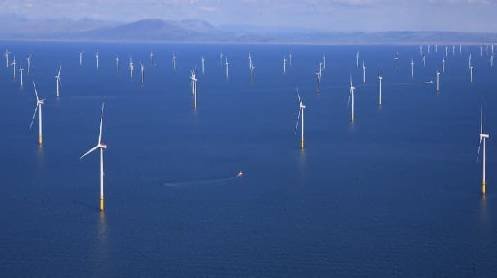A recent study on the variability of wind power production spanning the last 15 years has revealed intriguing insights into the fluctuations of onshore wind energy generation.
A recent study on the variability of wind power production spanning the last 15 years has revealed intriguing insights into the fluctuations of onshore wind energy generation. Conducted by wind and solar resource assessment consultancy Eoltech, the study utilized data from the irec Wind Energy Indexes, shedding light on the dynamic nature of wind power production.
According to the findings, onshore wind power production from the same capacity in a single country can fluctuate by as much as 25% from one year to another. However, when analyzed on a larger scale, such as a global or continental level, wind power generation exhibits significantly more stability.
Eoltech’s study drew from the irec Wind Energy Indexes, which are published monthly for 300 regions across 40 countries, covering a substantial portion of the world’s operational wind farms. These indexes serve as a benchmark, quantifying expected production levels in comparison to long-term averages within specific regions.
The global scope of the study is extensive, encompassing over 400 GW of operating wind farms worldwide. This accounts for more than 50% of total wind power capacity and over 80% of known wind farm facilities globally.
In terms of global wind power portfolios, the study revealed that annual production remains within a narrow 3% range over the past 15 years. Similarly, within Europe, where the analysis focused on 23 countries hosting 185 GW of wind power capacity, annual production variations were observed within a 7% range over the same period.
Habib Leseney, CEO of Eoltech, emphasized that while individual wind farms may experience significant year-to-year production differences due to local variations in wind resources, the cumulative production on a larger scale remains notably stable. This resilience is particularly evident when examining continental or global wind power portfolios.
Furthermore, the study dispelled concerns of a downward trend in the global wind resource over the past 15 years. Leseney highlighted the perpetual nature of wind energy, noting that “the wind does always blow somewhere on the planet,” providing optimistic prospects for the future of wind power.
The insights gleaned from Eoltech’s study offer valuable guidance for policymakers, energy stakeholders, and investors involved in the wind energy sector. By understanding the variability and stability of wind power production at different scales, stakeholders can make informed decisions to harness the full potential of this renewable energy source.
As the world continues its transition towards cleaner and more sustainable energy sources, the findings underscore the reliability and resilience of onshore wind power as a cornerstone of the global energy landscape.
